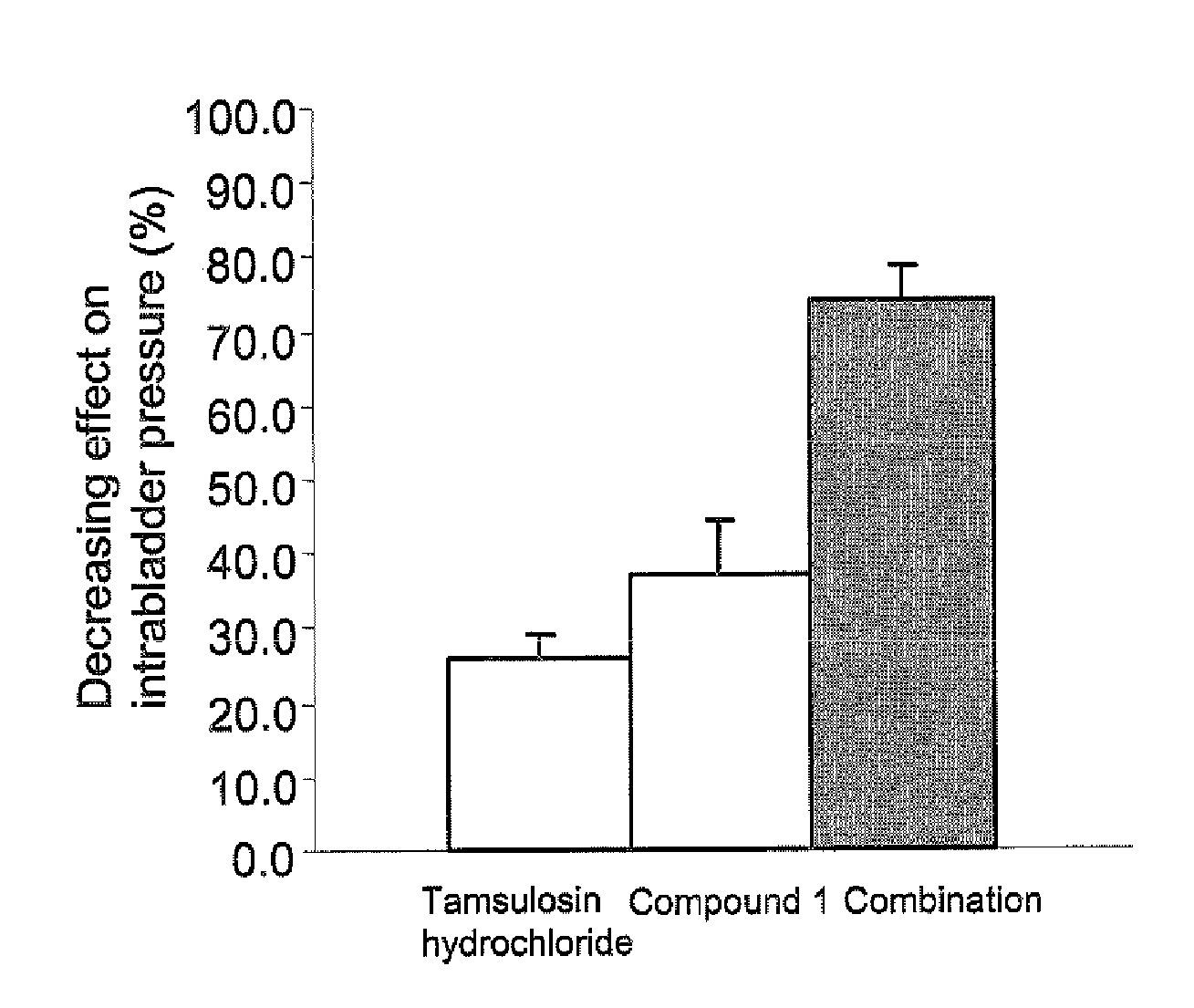Medicine For Prevention or Treatment of Frequent Urination or Urinary Incontinence
a technology for urinary incontinence and urination, applied in the field of medicine, can solve the problems of sometimes insufficient therapeutic efficacy and sometimes inability to continue treatment, and achieve the effects of preventing or treating urinary frequency, prolonging the micturition interval, and reducing intra-bladder pressur
- Summary
- Abstract
- Description
- Claims
- Application Information
AI Technical Summary
Benefits of technology
Problems solved by technology
Method used
Image
Examples
example 1
Intra-Bladder Pressure Measurement in Anesthetized Rat
[0044]Male rats were anesthetized with urethane. To each rat, tracheal and femoral vein cannulas were inserted. After midline abdominal incision, the ureter on either side was ligated and cut at the proximal end of the ligated portion. After the urethra was ligated, a cannula was inserted into the urinary bladder through the top of the bladder dome. Through a three-way connecter, warmed saline was instilled to adjust the intra-bladder pressure to about 10 cmH2O. The other end of the bladder cannula was connected to a pressure transducer, and intra-bladder pressure was measured. Three mg / kg of midodorin hydrochloride was injected through the femoral vein cannula. Ten minutes after the midodorin hydrochloride injection, tamsulosin hydrochloride (5 mg / kg, iv) or compound 1 (10 mg / kg, iv) was intravenously injected, and the decreasing effect by single administration of each drug was evaluated. Next, 15 minutes after administration, c...
example 2
Micturition Interval Measurement in Acetic Acid-Stimulated Rat
[0046]Female rats were anesthetized with urethane. After the midline abdominal was incised, and the ureter on either side was ligated and cut, the renal end was kept open. A cannula was inserted into the urinary bladder through the top of the bladder dome and connected to a three-way connecter to establish routes for the intra-bladder pressure measurement and instillation into the bladder. The other end of the bladder cannula was connected to a pressure transducer, and intra-bladder pressure was measured. Saline was continuously instilled into the bladder (3.6 mL / hr) . A solution of acetic acid (0.25%) was continuously instilled into the bladder (3.6 mL / hr) to induce shortening of the micturition interval. After stable micturition intervals were obtained, silodosin (0.03 mg / kg), (−)-2-[4-[2-[[(1S, 2R)-2-hydroxy-2-(4-hydroxyphenyl)-1-methylethyl]amino]ethyl]-2,5-dimethylphenoxy] acetic acid (hereinafter referred to as “com...
PUM
| Property | Measurement | Unit |
|---|---|---|
| Electrical conductance | aaaaa | aaaaa |
| Mass flow rate | aaaaa | aaaaa |
| Mass flow rate | aaaaa | aaaaa |
Abstract
Description
Claims
Application Information
 Login to View More
Login to View More - R&D
- Intellectual Property
- Life Sciences
- Materials
- Tech Scout
- Unparalleled Data Quality
- Higher Quality Content
- 60% Fewer Hallucinations
Browse by: Latest US Patents, China's latest patents, Technical Efficacy Thesaurus, Application Domain, Technology Topic, Popular Technical Reports.
© 2025 PatSnap. All rights reserved.Legal|Privacy policy|Modern Slavery Act Transparency Statement|Sitemap|About US| Contact US: help@patsnap.com



